Regenerative Agriculture: Healing the Planet one Farm at the Time
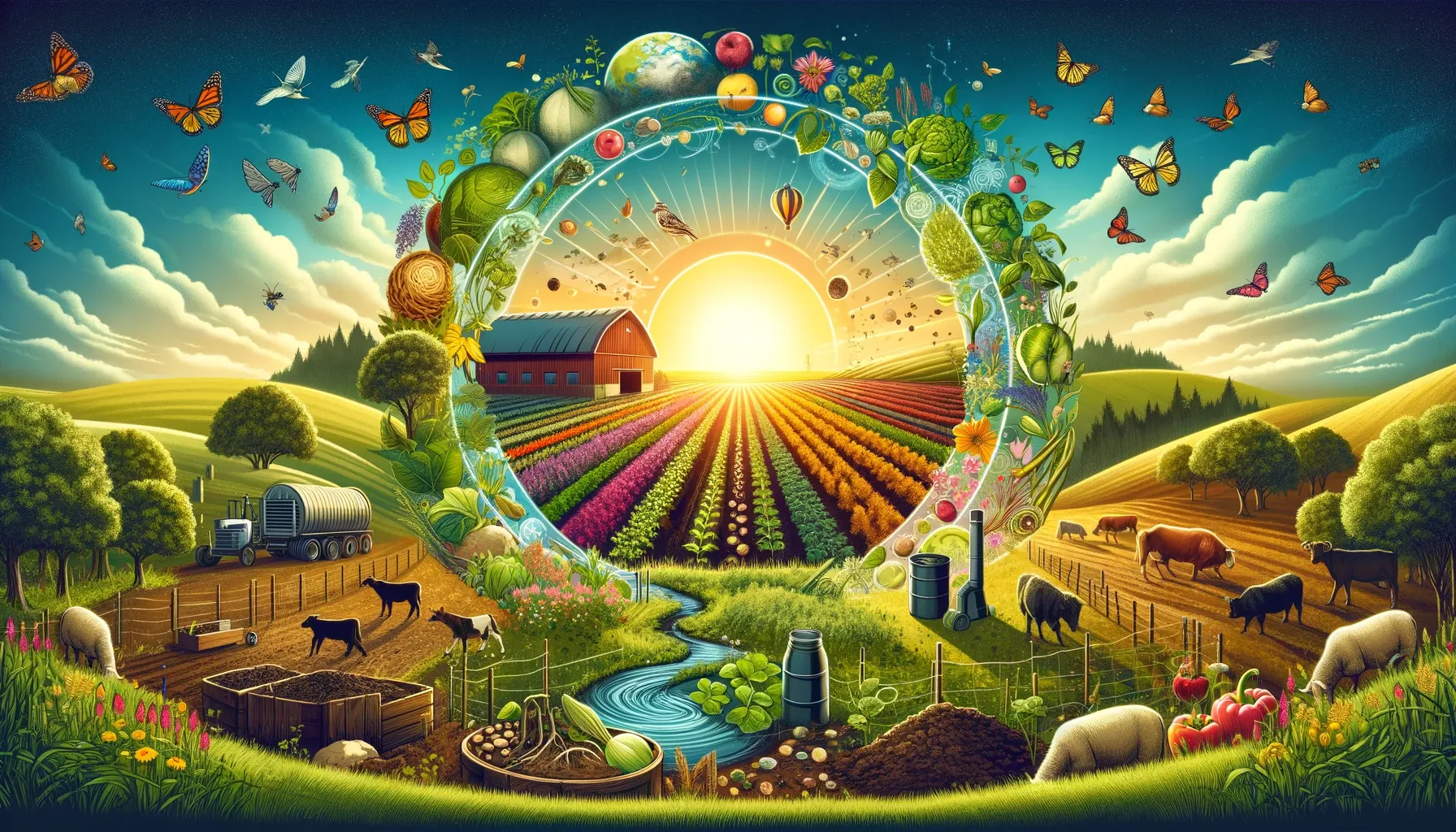
Two years ago, we embarked on an ambitious project: transforming a stretch of desert called Karima Farms in Nuweiba, Sinai, Egypt, into a thriving farm. Today, amidst the arid beauty of Sinai, our farm is alive with chickens, ducks, turkeys, pigeons, goats, and sheep. It's a living example of how, with care and respect for the land, life can flourish in even the most challenging environments. This journey has not only been about bringing new life to the desert but also about embracing a concept that could very well change the way we think about farming: regenerative agriculture.
Regenerative agriculture is more than a method; it's a philosophy. Unlike traditional farming, which often takes more from the earth than it gives back, regenerative agriculture seeks to heal. It’s about restoring the land, making it healthier year after year, through practices that rebuild soil organic matter and restore degraded soil biodiversity. This approach doesn't just aim to sustain; it aims to regenerate.
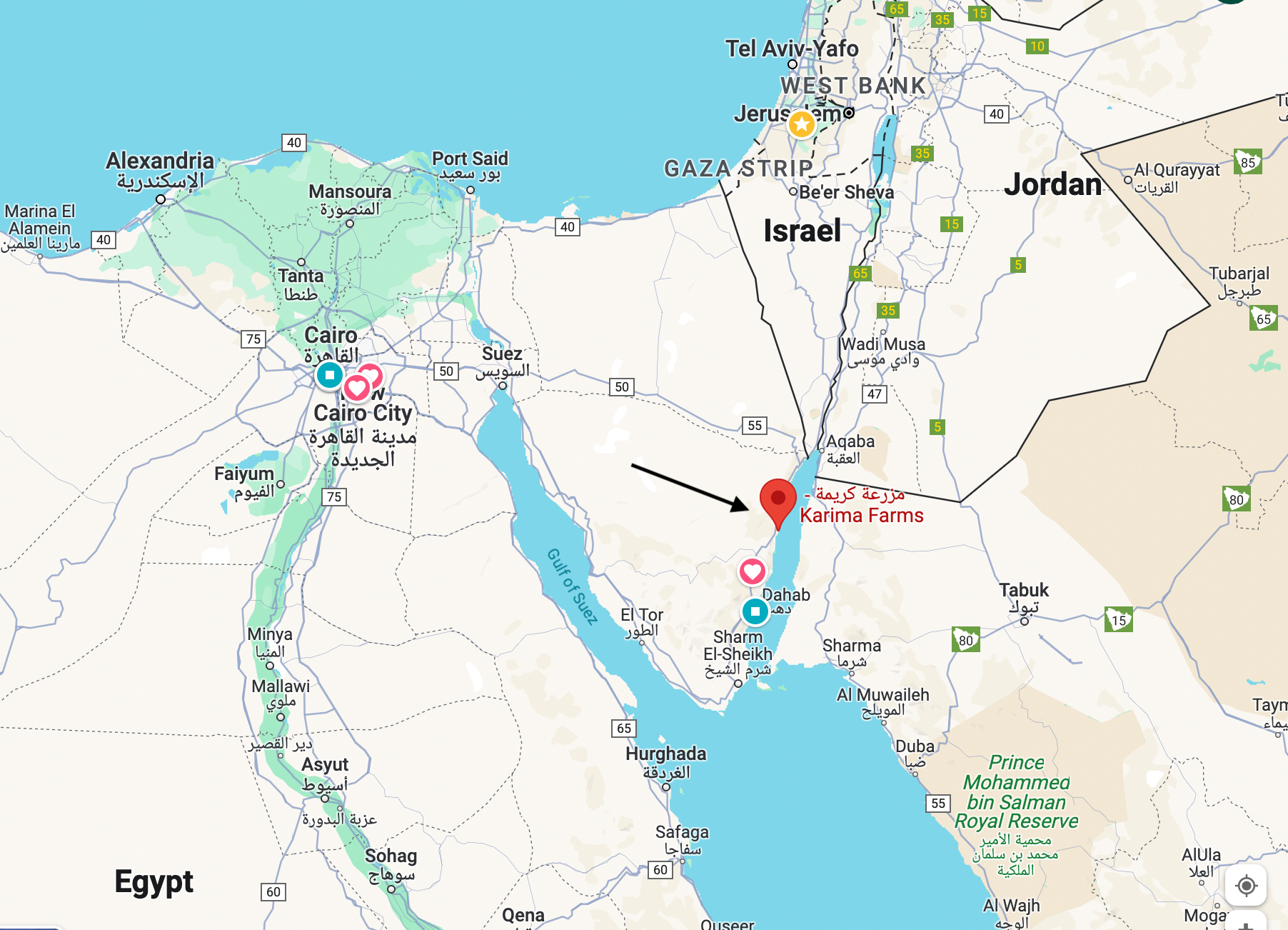
This might sound similar to organic agriculture, which avoids synthetic inputs for a more natural approach. However, regenerative agriculture goes a step further by actively improving the ecosystem. It's not just about avoiding harm but about doing good—enhancing soil health, water retention, and biodiversity. It’s a holistic approach that considers the entire ecosystem.
Our farm in Sinai is a testament to what can be achieved with regenerative agriculture. It’s a journey of learning, growth, and, most importantly, hope. As we share our story, we invite you to join us in exploring how regenerative practices can not only transform a piece of land but also how we relate to our planet. It's about nurturing a future where farming works in harmony with nature, ensuring a thriving, resilient world for generations to come. Follow us on Instagram.
Have a listen to this podcast episode by my husband Ahmed and me about our farm what we're trying to achieve:
Principles of Regenerative Agriculture
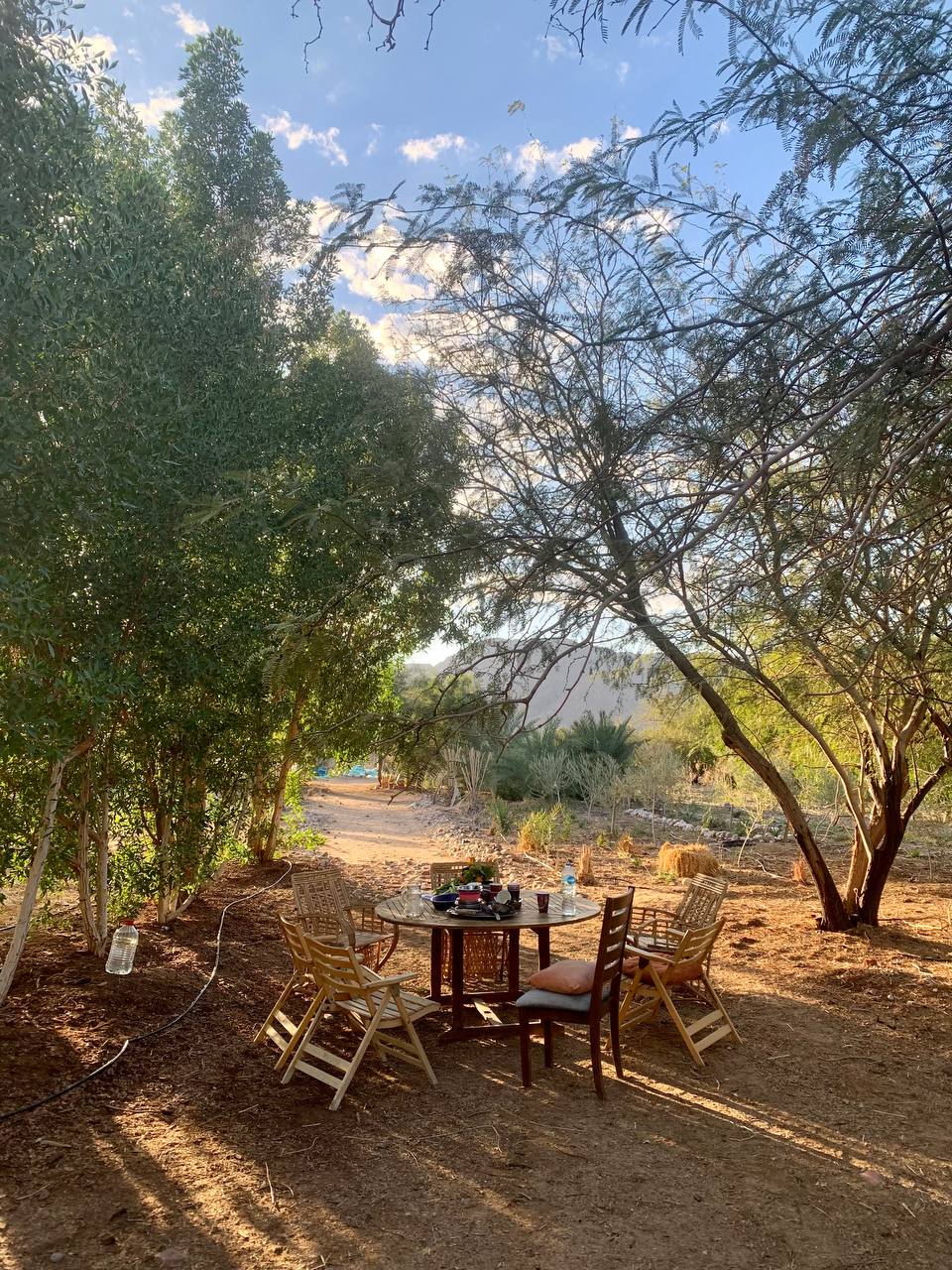
Regenerative agriculture is a holistic approach to farming and grazing practices that seek to rehabilitate and enhance the entire ecosystem of the farm by placing a strong emphasis on soil health, water management, and biodiversity. The core goal is not only to produce food but to do so in a way that actively improves the environment. Here are the main cornerstones and principles of regenerative agriculture:
Soil Health Improvement: The primary focus of regenerative agriculture is to improve soil fertility and vitality through enhancing its organic matter. This is achieved by practices such as cover cropping, reduced tillage, and the application of compost and animal manures. Healthy soil leads to improved plant health, increased carbon sequestration, and reduced erosion. Furthermore, healthy soil is really the foundation of regenerative agriculture. Our initial challenge was transforming sand and stones into fertile ground. Through practices like mulching, we've worked to enhance soil structure and fertility, fostering an environment where beneficial microbes can thrive. This has been crucial in turning a barren landscape into productive land.
Water Management: Efficient use and conservation of water are critical components of regenerative agriculture, emphasizing the need to enhance the soil's capacity to retain water. By incorporating organic matter into the soil and designing systems that closely replicate natural water cycles, regenerative practices significantly bolster drought resistance and diminish reliance on artificial irrigation. In our specific context, with two wells serving as our primary water sources, we've adopted smart water management strategies to regulate our supply throughout the year. During the summer months, when water scarcity becomes a more pressing challenge, our focus shifts towards maximizing water retention. We employ methods designed to minimize evaporation and ensure that water is effectively absorbed and utilized by the soil, rather than being lost. This approach not only conserves our precious water resources but also supports the health and productivity of our land, proving to be a vital practice in our regenerative agriculture efforts.
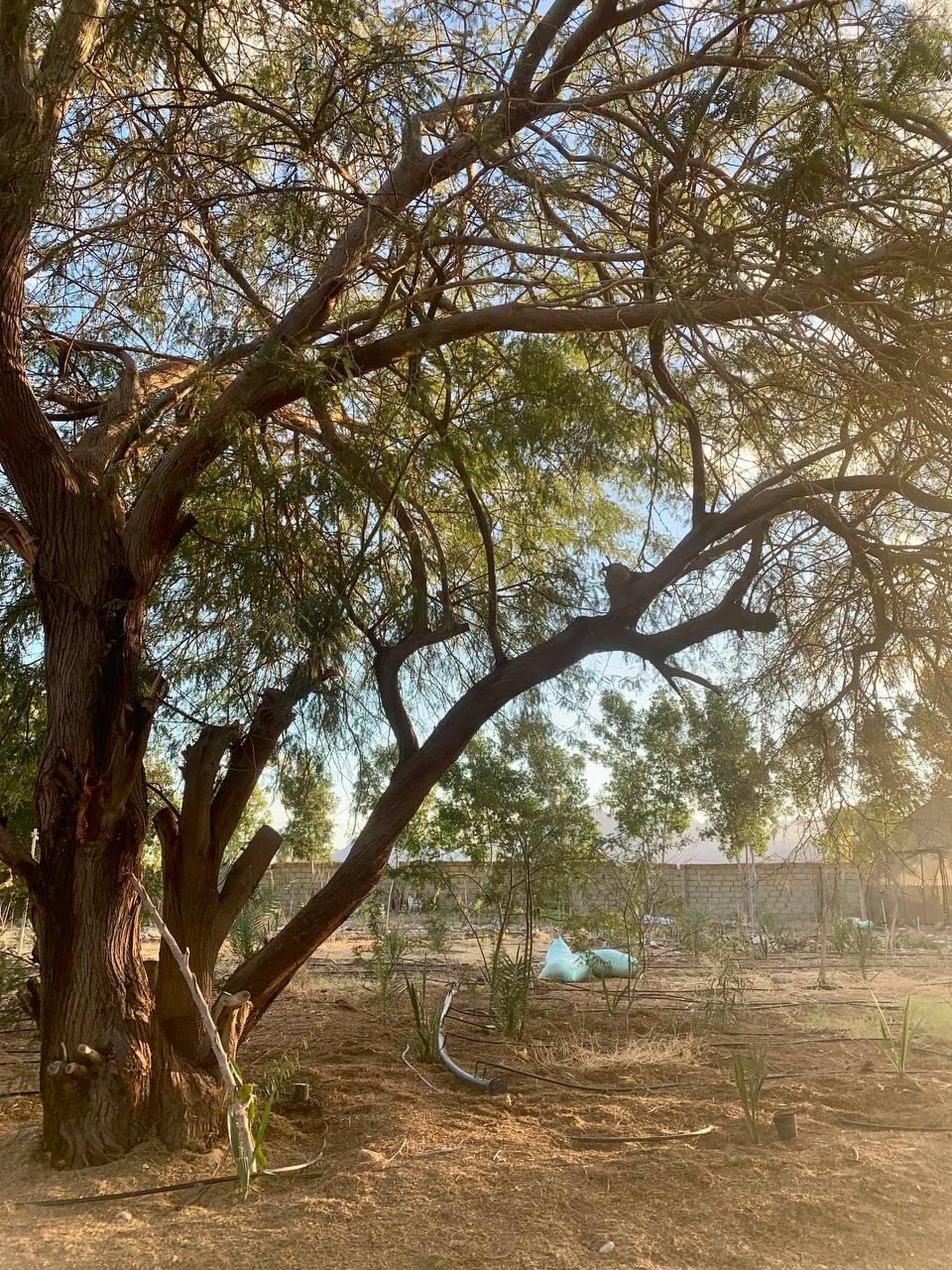
Biodiversity Enhancement and Livestock introduction: Diverse ecosystems are indeed the backbone of resilience and productivity in agriculture. Regenerative agriculture champions biodiversity in every aspect of the farm's life—from a wide array of plant species thriving in polycultures and agroforestry systems to the rich tapestry of soil microbes that play essential roles beneath the surface. A key component of this biodiversity is the integration of livestock, which we have embraced wholeheartedly on our farm. Our diverse array of chickens, ducks, turkeys, pigeons, goats, and sheep not only enriches the soil through natural fertilization but also plays a crucial role in managing pests and weeds, reducing our reliance on chemical interventions.
The benefits of our regenerative practices extend beyond the immediate boundaries of our farm. As our soil health has improved and our landscapes have become more diversified, we've witnessed a heartening return of wildlife, particularly birds and bees, which are vital pollinators and indicators of a healthy ecosystem. Their comeback underscores the success of our efforts to create a balanced and thriving environment. This resurgence of natural life is not just a sign of ecological health but also contributes to the pollination of our crops and supports the overall productivity of our farm. Through these efforts, we're not just cultivating crops and raising livestock; we're nurturing a vibrant, self-sustaining ecosystem that flourishes with life.
Carbon Sequestration: By prioritizing soil health, regenerative agriculture leverages the natural process of carbon sequestration to combat climate change while simultaneously enriching soil fertility. This method hinges on enhancing the soil's organic matter through practices like cover cropping, composting, and reduced tillage. As plants grow, they pull carbon dioxide from the atmosphere, using carbon to build their structures and releasing oxygen back into the air. When these plants die, the carbon within their tissues becomes part of the soil as it decomposes, aided by a vibrant community of soil organisms. This not only locks away carbon that would otherwise contribute to greenhouse gas levels but also contributes to the development of rich, fertile soil full of organic matter. Healthy, carbon-rich soil retains water more effectively, supports a diversity of life, and yields robust crops. In effect, regenerative agriculture transforms farms into vital carbon sinks, mitigating the impact of climate change while creating more resilient agricultural systems. These practices, embodying a deep understanding of ecological cycles, offer a path toward sustainability by restoring the balance between agriculture and the planet's carbon cycle. This intricate dance of carbon capture and storage, coupled with the nurturing of soil life, forms the cornerstone of a regenerative approach to farming that heals the earth as it feeds humanity.

Farming in Harmony with Nature and Community: Regenerative agriculture seeks to work with natural systems rather than dominate them. This principle involves understanding local ecosystems and utilizing native plants and animals to create a self-sustaining farm that requires minimal human intervention over time.
Economic viability and social equity form essential pillars of regenerative agriculture, recognizing that true sustainability encompasses not only environmental health but also the well-being of farmers, workers, and the wider community. In our endeavor to practice regenerative agriculture, we place a strong emphasis on creating a vibrant, interconnected community among local farms. This initiative is about more than just sharing knowledge and resources; it's about fostering a sense of unity and support that transcends individual operations, strengthening the agricultural fabric of our area.
Central to our community-building efforts is the commitment to education and exposure, particularly for the younger generation. We actively engage children in the farming process, providing them with hands-on experiences that reveal the journey of food from seed to table. This not only nurtures a deeper appreciation for nature and food but also sows the seeds for future stewards of the land who understand the importance of sustainable practices.
Furthermore, we are dedicated to making wholesome, free-range produce accessible to our local community. By offering products that are not only nutritious but also ethically produced, we contribute to the health and well-being of our neighbors. This approach not only supports the economic sustainability of our farm by building a loyal customer base but also ensures that the benefits of regenerative agriculture—fresh, healthy food—are shared equitably within our community.
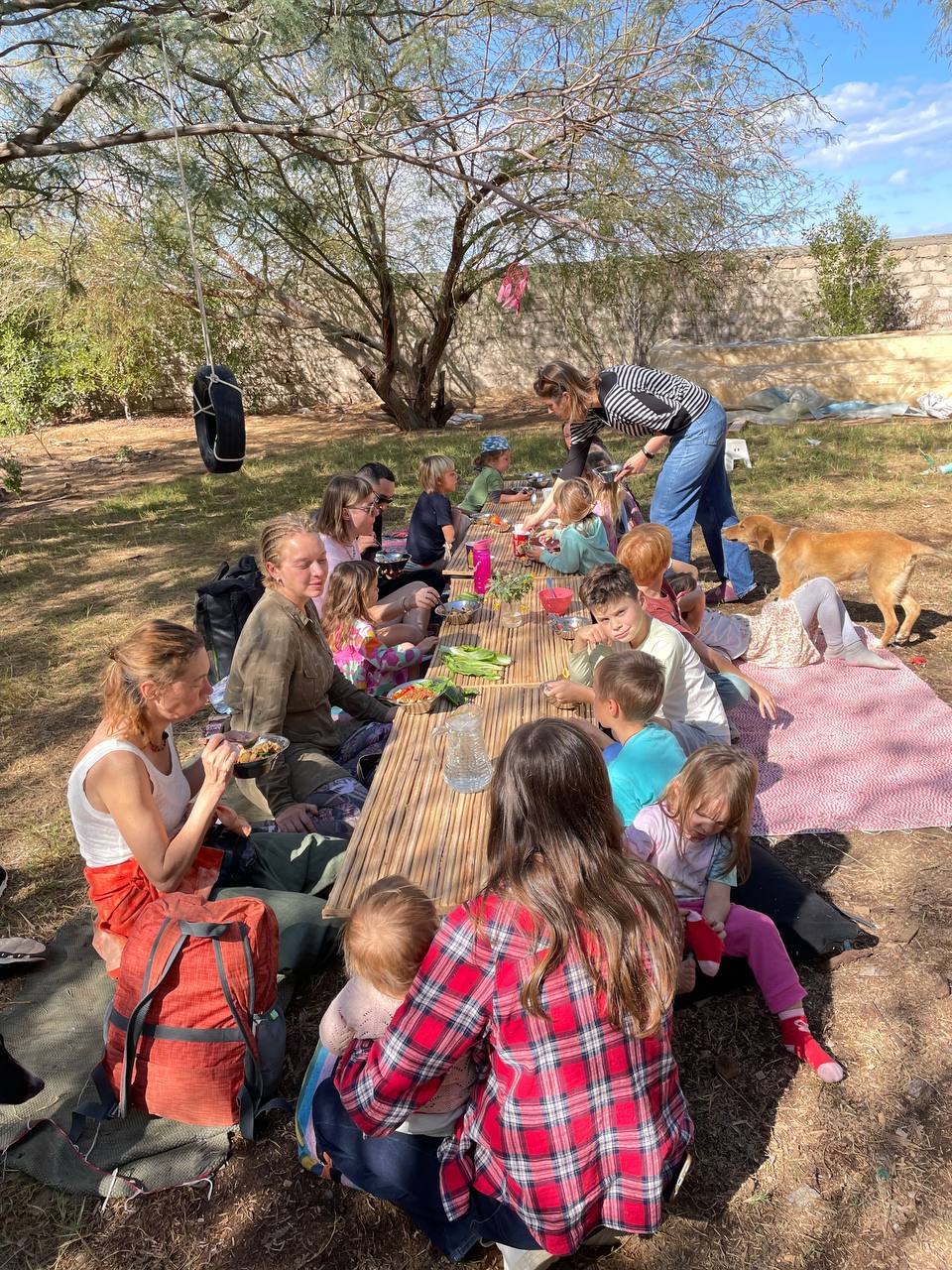
Resilience and Adaptation: Regenerative agriculture is rooted in the principle of resilience, aiming to create agricultural systems that can withstand and recover from environmental, economic, or social stresses. By focusing on soil health, biodiversity, and ecosystem balance, these practices equip farms to handle challenges like climate change, making them adaptable over time for sustained productivity. Healthy soils with increased organic matter can better absorb water, reducing the impact of droughts and floods, while diverse crop and livestock systems minimize the risk of pest infestations and disease outbreaks, enhancing overall farm resilience. Economically, reducing reliance on costly synthetic inputs and adopting diversified income strategies help buffer farms against market fluctuations and financial uncertainties. Socially, regenerative agriculture strengthens community ties, fostering networks that support recovery and adaptation. Ultimately, this holistic approach not only ensures the viability of agricultural landscapes in the face of current challenges but also secures their future, promoting a sustainable and adaptable farming paradigm for generations to come.

Minimizing External Inputs: In regenerative agriculture, the aim is to minimize dependence on synthetic inputs like fertilizers and pesticides, which can be detrimental to the environment and costly for farmers. This approach shifts focus towards harnessing and enhancing natural processes and cycles to sustain farm operations. A key aspect of this philosophy is the recognition of insects and bugs as integral components of the ecosystem, each playing a vital role in its balance and health. Rather than resorting to external chemical interventions that can disrupt these natural dynamics and harm beneficial organisms, regenerative practices seek to create a balanced ecosystem where pests are managed through natural predators and biodiversity. For example, the presence of certain birds and beneficial insects can significantly reduce pest populations, eliminating the need for synthetic pesticides. Similarly, planting diverse crops and employing crop rotation disrupts pest and disease cycles, naturally reducing their impact. This holistic view extends to understanding that occasional pest outbreaks are part of the natural cycle and can be managed through healthy soil, plant diversity, and the strategic introduction of natural pest predators. By fostering an environment where every organism has a role, regenerative agriculture builds resilience against pests and diseases, reduces the farm's carbon footprint, and enhances the overall sustainability and productivity of the farm without relying on harmful external inputs.
Regenerative agriculture vs. Organic Agriculture
Regenerative agriculture and organic farming both aim to promote healthier ecosystems and sustainable food systems, but they differ in their approaches and underlying principles. Organic farming focuses on avoiding synthetic pesticides and fertilizers, emphasizing natural inputs and processes to produce food that's healthier for consumers and the environment. It operates within a set framework of standards that dictate what can and cannot be used on the farm. Regenerative agriculture, on the other hand, goes a step further by actively seeking to improve and restore soil health, biodiversity, and ecosystem resilience. It's not just about what is avoided, but about implementing practices that enhance the land's natural fertility and carbon sequestration capabilities, such as cover cropping, rotational grazing, and minimal soil disturbance. While organic farming is an essential step away from conventional agriculture's reliance on chemicals, regenerative agriculture offers a holistic approach that works with nature to heal and improve the earth. This makes regenerative agriculture a more dynamic and comprehensive model for sustainability, aiming not only to do no harm but to actively do good, making it a crucial evolution in the pursuit of truly sustainable agriculture.
Regenerative agriculture is really the only option for humanity's future
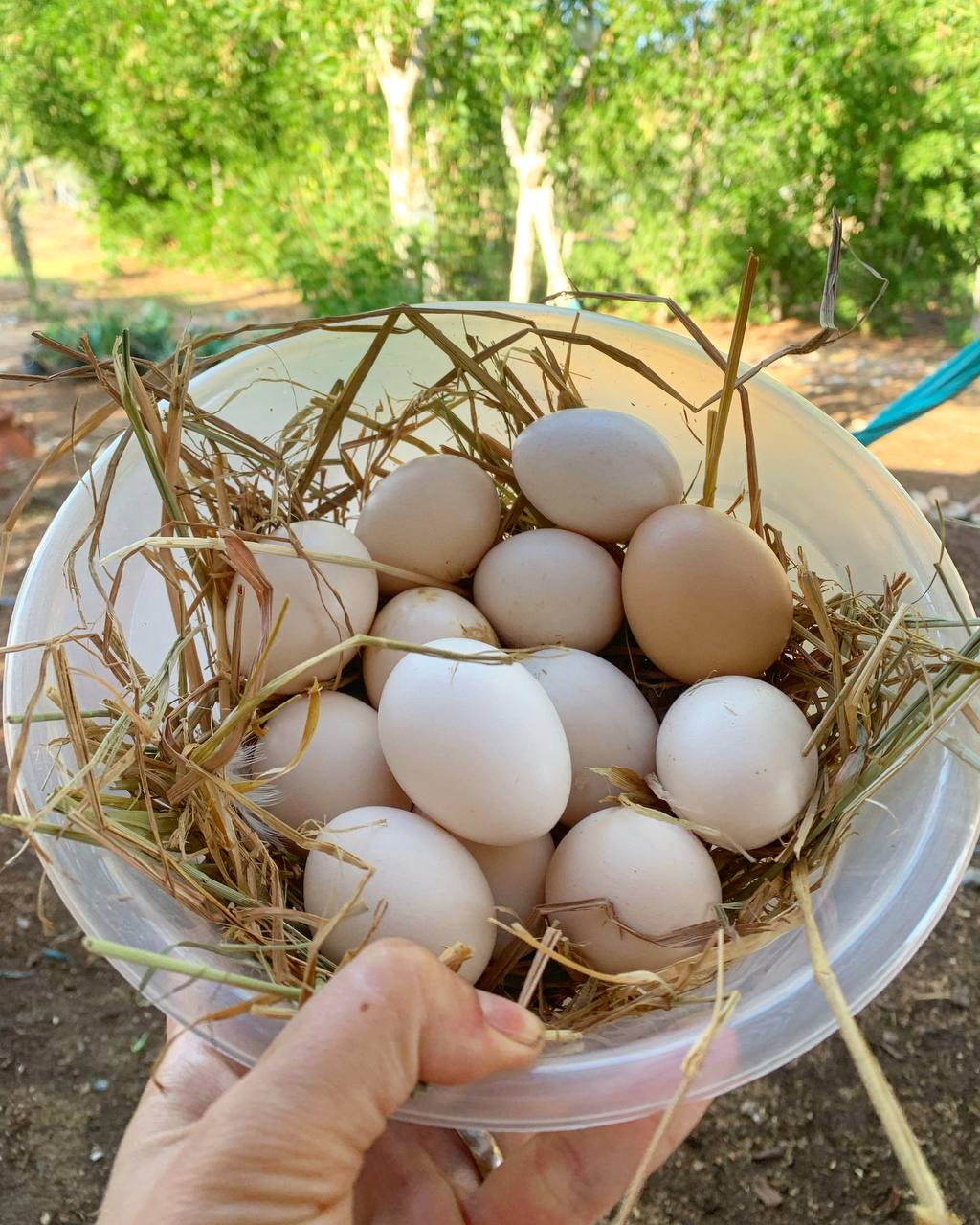
Regenerative agriculture emerges as the only viable option for humanity's future as it addresses the multifaceted crises of soil degradation, biodiversity loss, and climate change in a holistic and sustainable manner. Unlike conventional practices that deplete the earth's resources, regenerative agriculture works to replenish and enhance them, focusing on soil health, water management, and ecosystem diversity. By sequestering carbon in the soil, it tackles the pressing issue of climate change head-on, turning agricultural lands into carbon sinks rather than sources. Moreover, it ensures water conservation and quality, enhances food security through improved crop resilience, and fosters a biodiverse environment that can withstand pests and diseases naturally. In a world facing environmental degradation, diminishing natural resources, and a changing climate, regenerative agriculture offers a path to not only sustain but regenerate the earth's ecosystems. It presents a blueprint for a future where agriculture contributes to healing the planet, making it a necessary shift to ensure the well-being and survival of humanity and the natural world.
Can Regenerative Agriculture Feed the Planet?
Regenerative agriculture holds significant promise for feeding the planet in a sustainable and environmentally friendly manner. By revitalizing soil health, increasing biodiversity, and enhancing ecosystem services, regenerative practices can lead to more resilient food systems capable of producing higher yields over time. The emphasis on soil fertility and water retention improves crop resilience, which is crucial for maintaining productivity in the face of climate change and extreme weather events. Moreover, the diversity of crops and integrated livestock systems inherent in regenerative agriculture can provide a variety of nutritional foods, contributing to food security. While challenges exist in scaling up regenerative practices globally, the potential for these methods to restore degraded lands, sequester carbon, and increase food production sustainably is increasingly recognized. With strategic support and investment, regenerative agriculture could indeed play a crucial role in feeding the planet's growing population while healing the earth.
Challenges of Regenerative Farming
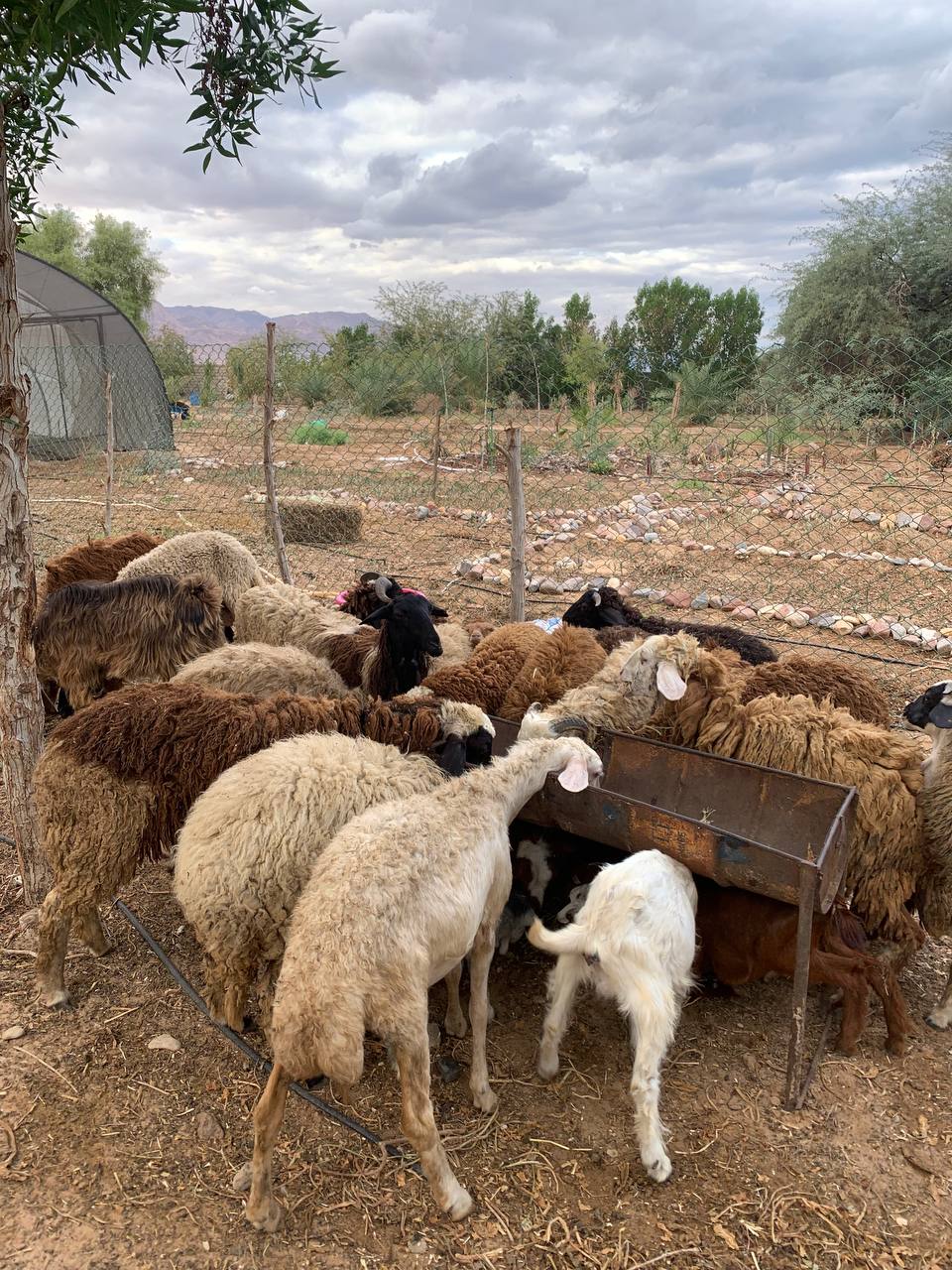
Adopting regenerative farming practices, while promising for sustainable agriculture and environmental restoration, comes with its own set of challenges. One of the primary hurdles is that crops may not grow as quickly as they do with conventional farming methods, largely because success is highly dependent on the gradual improvement of soil health. This slower pace can be a significant adjustment for farmers used to the immediate effects of synthetic fertilizers on crop growth. Moreover, transitioning to regenerative practices often meets with skepticism; many in the broader agricultural community may view these methods as unconventional or even question their effectiveness, leading to a perception of regenerative farmers as outliers. This skepticism can stem from a lack of awareness about the long-term benefits of regenerative agriculture, including its potential to combat climate change, restore biodiversity, and ultimately yield more resilient and productive farming systems. Overcoming these challenges requires persistence, education, and community-building efforts to share successes and demonstrate the tangible benefits of regenerative practices, both for the environment and for long-term agricultural productivity.
Regenerative agriculture vs. Permaculture
Regenerative agriculture and permaculture are both innovative approaches to farming and land management, each with a focus on sustainability and ecological stewardship, yet they differ in scope and application. Regenerative agriculture primarily concentrates on enhancing soil health, increasing biodiversity, and restoring ecosystems to improve agricultural productivity and environmental resilience. It involves practices such as cover cropping, rotational grazing, and reduced tillage to achieve these goals. Permaculture, on the other hand, is a broader design philosophy that applies beyond agriculture to how communities and societies can live in harmony with nature. It encompasses not just food production but also energy use, building design, and resource management, guided by principles like "care for the earth" and "care for people." While regenerative agriculture is often a component of permaculture systems, permaculture extends the concept of regeneration into a holistic framework for sustainable living and land use. Both approaches are critical in the movement towards more sustainable and resilient food systems and communities, offering complementary strategies for addressing environmental challenges.
Conclusion
In reflecting on our journey with regenerative agriculture, we find ourselves deeply grateful for discovering a farming style that has not only transformed our land but has profoundly enriched our understanding of the planet and the essence of our existence. This approach has allowed us to cultivate more than just crops; it has enabled us to nurture a profound connection with the earth, learning from its rhythms and wisdom. Through the challenges and successes, regenerative agriculture has opened our eyes to the intricate web of life that sustains us all, teaching us the importance of stewardship, balance, and respect for the natural world.
We are thankful for the opportunity to be part of a movement that heals the land while producing nourishing food, fostering biodiversity, and combating climate change. This journey has been a powerful reminder of the impact we can have on our planet and has instilled a deep sense of responsibility to continue learning, growing, and sharing this knowledge with others. Regenerative agriculture has not just changed the way we farm; it has transformed the way we see the world and our place within it, offering a path towards a more sustainable, equitable, and vibrant future for all. For this opportunity to contribute to the healing of our planet while rediscovering the simplicity and beauty of existence, we are truly grateful.
Please follow our journey on instagram.
Resources and Movies to Learn about Regenerative Farming
- Books:
- "Dirt to Soil: One Family’s Journey into Regenerative Agriculture" by Gabe Brown
- "The Soil Will Save Us: How Scientists, Farmers, and Foodies Are Healing the Soil to Save the Planet" by Kristin Ohlson
- "Call of the Reed Warbler: A New Agriculture, A New Earth" by Charles Massy
- "Regenerative Agriculture" by Richard Perkins
- "Farming While Black: Soul Fire Farm’s Practical Guide to Liberation on the Land" by Leah Penniman
- Movies/Documentaries:
- "Kiss the Ground" – This documentary unveils the potential of regenerative agriculture to balance our climate, replenish our vast water supplies, and feed the world. It presents a compelling narrative through the voices of activists, scientists, and farmers.
- "The Biggest Little Farm" – This film chronicles the eight-year quest of John and Molly Chester as they trade city living for 200 acres of barren farmland and a dream to harvest in harmony with nature. It’s a testament to the trials, errors, and successes of embracing regenerative farming.
- Websites and Online Platforms:
- Regeneration International: Offers a wide range of resources, including articles, research papers, and case studies on regenerative agriculture.
- Soil Health Academy: Provides workshops and educational resources for farmers, educators, and ag professionals on regenerative agricultural practices.
- Kiss the Ground: Beyond the documentary, their website offers educational resources, courses, and advocacy tools to promote regenerative agriculture.
- Organizations and Research Institutes:
- Rodale Institute: A pioneer in organic and regenerative agriculture research, offering training and resources for farmers.
- Savory Institute: Focuses on large-scale restoration of the world’s grasslands through holistic management and regenerative practices.
- Podcasts:
- "The Regenerative Agriculture Podcast," hosted by John Kempf, explores the science and practices behind regenerative farming.
- "Farmerama Radio," which shares the voices of smaller-scale farmers practicing regenerative and organic agriculture.
These resources provide a comprehensive overview of regenerative agriculture, offering insights, practical guidance, and inspiration for anyone looking to make a positive impact on the planet through sustainable farming.
FAQs about regenerative agriculture
- What is Regenerative Agriculture?
Regenerative agriculture is a holistic approach to farming and land management that seeks to restore soil health, increase biodiversity, improve water cycles, and enhance ecosystem services. It goes beyond sustainable practices by actively working to regenerate and revitalize the land, making it more fertile and productive over time. - How Does Regenerative Agriculture Differ from Organic Farming?
While both regenerative agriculture and organic farming aim to reduce the use of synthetic chemicals and promote environmental health, regenerative agriculture focuses more broadly on improving soil health, sequestering carbon, and restoring ecosystem balance. Organic farming primarily avoids synthetic inputs, whereas regenerative agriculture actively employs practices that rebuild and rejuvenate the soil and environment. - Why is Regenerative Agriculture Considered Better for the Climate?
Regenerative agriculture is considered better for the climate because it emphasizes carbon sequestration—capturing atmospheric carbon dioxide and storing it in the soil. This process not only mitigates greenhouse gas emissions but also improves soil health and fertility, leading to more resilient farming systems that can better withstand the impacts of climate change. - Can Regenerative Agriculture Improve Food Security?
Yes, regenerative agriculture can improve food security by enhancing soil fertility, increasing biodiversity, and creating more resilient ecosystems. These practices lead to higher yields and more diverse crops, which can provide a buffer against pests, diseases, and extreme weather, ensuring a stable food supply. - How Can I Support Regenerative Agriculture?
You can support regenerative agriculture by purchasing products from farms that practice regenerative methods, advocating for policies that promote regenerative practices, and if you're a farmer or gardener, implementing regenerative techniques on your own land. Educating others about the benefits of regenerative agriculture and supporting organizations and research in this field can also contribute to its growth and adoption.

